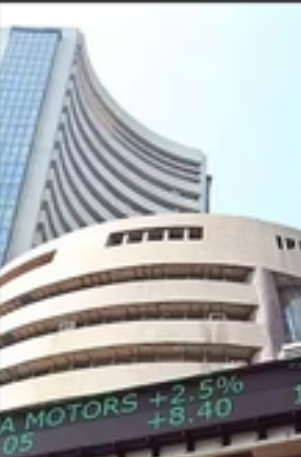
Sensex
- Indian equity indices hit record highs on August 30, 2024, driven by positive cues from Asian markets.
- The bullish trend was seen across large-cap, midcap, and small-cap stocks, with sectors like PSU Bank, Financial Services, FMCG, Pharma, and Energy leading the charge.
- Foreign institutional investors showed confidence in the Indian market, buying equities worth Rs 3,259 crore on August The market's performance reflects the resilience of the Indian economy and the strength of its recovery from the COVID-19 pandemic.
Indian equity indices reached unprecedented heights on Friday, August 30, 2024, propelled by positive cues from Asian peers. The Sensex opened at a record high of 82,355, marking an increase of 221 points or 0.27 per cent, while the Nifty rose by 66 points or 0.26 per cent to 25,217. The market's bullish trend was evident as 1,276 shares on the National Stock Exchange (NSE) were in the green, with only 888 in the red.
The upward trajectory was not confined to large-cap stocks. Midcaps and small caps also demonstrated a bullish trend. The Nifty Midcap 100 index stood at 59,139, up 255 points or 0.45 per cent, and the Nifty Smallcap 100 index was at 19,292, up 79 points or 0.41 per cent.
The sectors leading the charge were PSU Bank, Financial Services, FMCG, Pharma, and Energy. In the Sensex pack, Bajaj Finance, Bajaj Finserv, HDFC Bank, NTPC, Power Grid, L&T, Titan, M&M, Asian Paints, and Reliance were the top gainers.
Market Outlook and Foreign Investment
Market experts believe that this near-term trend in the market is likely to continue. A potential breakout to higher levels could occur if there is significant buying in banking stocks. However, the struggle for deposits experienced by the banking system and the consequent feared pressure on margins are keeping the demand for banking stocks depressed despite attractive valuations.
The bullish trend in the Indian market was mirrored in Asian markets. Tokyo, Seoul, Jakarta, and Bangkok were trading with a gain of about half a percent. US markets, however, closed mixed on Thursday.
Foreign institutional investors (FIIs) bought equities worth Rs 3,259 crore on August 29, while domestic institutional investors extended their buying as they bought equities worth Rs 2690 crore on the same day. This influx of foreign investment is a positive sign for the Indian market, indicating foreign investor confidence in the Indian economy and its equities.
Historical Similarities and Global Economic Recovery
Historically, the Indian stock market has shown resilience and an ability to bounce back from periods of volatility. For instance, in the aftermath of the 2008 global financial crisis, the Sensex plunged from a peak of over 20,000 in January 2008 to below 8,000 by March 2009. However, it recovered swiftly and was back above 20,000 by December 2010.
The current market scenario is reminiscent of the period following the 2014 general elections in India, when the Sensex and Nifty hit then-record highs on optimism about the newly elected government's reform agenda. The FIIs had played a significant role then too, pumping in billions of dollars into Indian equities in anticipation of a stable and reform-oriented government.
The current market rally also comes at a time when the global economy is recovering from the impact of the COVID-19 pandemic. Central banks worldwide have maintained accommodative monetary policies to support economic recovery, which has led to increased liquidity in global financial markets. This has benefitted emerging markets like India, attracting foreign investors looking for higher returns.









